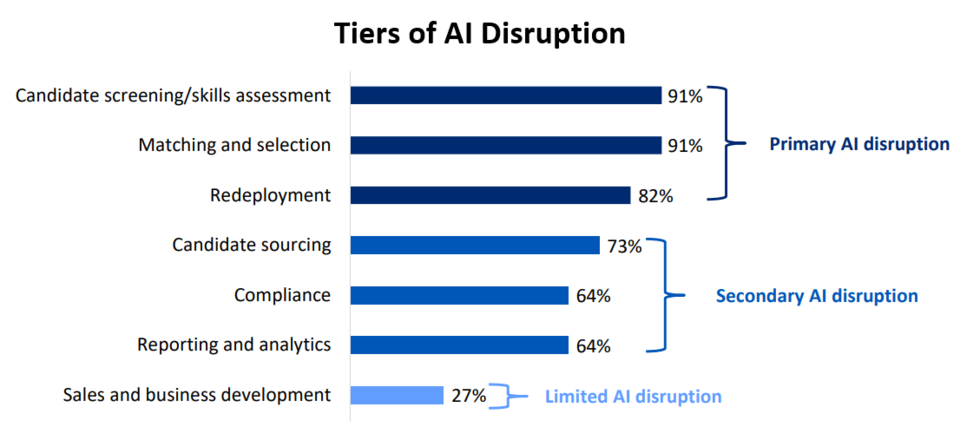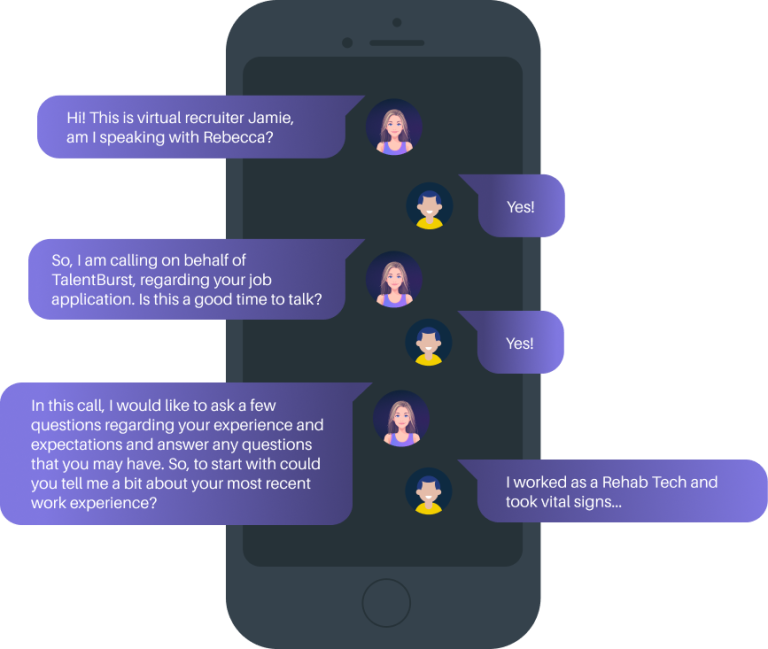“Speed at scale is the most powerful combination in staffing, and also the hardest problem to solve,” says Ashwarya Poddar, founder and CEO of ConverzAI, which provides the Voice AI solution TalentBurst engaged. “If you can reach candidates faster, you can get top talent. If you can qualify them faster, you make more money. If you onboard candidates faster, you cash in faster.”
“The platform screened 5,000 applicants in under three days,” says Baljit Gill, TalentBurst’s founder and chief operating officer. “That’s 5,000 warm leads that could be converted into submittals and starts.”

Source: How the staffing industry can prepare for the AI revolution, Staffing Industry Analysts
“We are standing on the brink of a technological revolution,” Poddar says. “It’s not just about faster computers or larger databases anymore. It’s about using a new set of AI tools that can completely transform your business and the entire staffing industry.”
Demystifying AI’s Benefits
Recruiting speed at scale and a $10 million revenue boost. Integrity Staffing Solutions faced tremendous variations in scale based on clients’ fluctuating needs. With the firm’s human recruiters reaching maximum capacity at times, the firm tested Jamie to qualify candidates.

Figure 2. ConverzAI’s Voice AI recruiter can communicate with candidates through voice, text or email. Source: ConverzAI
“The candidate was assigned a role within an hour and a half of applying. We got a record number of starts in a short time,” says Todd Bavol, co-founder and CEO. “I was worried this was going to be a case where the [candidate would be] screaming, ‘Operator! I want to talk to a live person!’ during the call. But it couldn’t have been further from the truth.”
“When you apply for a job and never hear back, that’s the worst experience you can have,” said Romy Lindner, director of project management office for I.K. Hoffman. A properly designed AI recruiting system is transparent, consistent and always available, connecting with candidates when and how they prefer.
Advice for a Smooth AI Deployment
- Start small but move quickly. Careful planning is important, as is starting with a small-scale test. The system should be easy to implement and fit into your organization’s workflow — and its value should be quickly apparent. Once that happens, scale up quickly.
- Build support at all levels of the firm. Executives need to articulate the vision for the technology and celebrate early wins. But having a few handpicked recruiters experiment with AI-enabled recruiting — and share their enthusiasm for it — is also essential.
- Maximize the value the firm gets from AI. Virtual recruiters that can converse with candidates make for impressive conversation starters. But don’t overlook the less flashy features of AI, such as increasing the value of candidate databases by analyzing their contents and keeping them up to date. This can lead to more opportunities for candidates and more revenue for the staffing firm.
- Don’t neglect the system’s users. It can be challenging to get employees to use new technology. Strong business operations leaders are essential for driving change management — and for helping recruiters see that AI can make them more productive by giving them more time to focus on candidate relationships.
- Keep an eye on compliance. Inevitably, regulators and legislators will put legal guardrails around AI, so it’s important to be sure the systems you use avoid implicit bias — and to continually review consent forms, privacy policies and terms and conditions with legal counsel.
To see how AI can propel your operations, contact ConverzAI at team@converzai.com or Request a Demo.